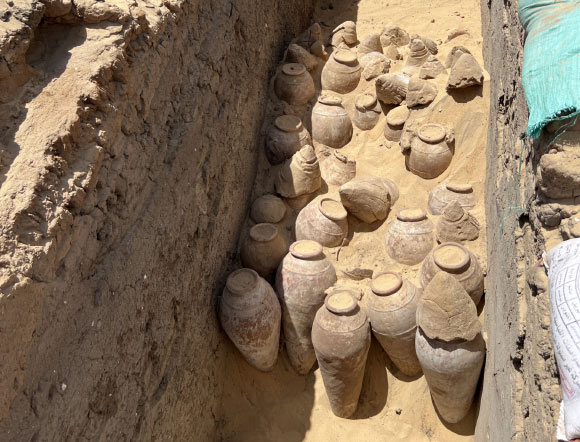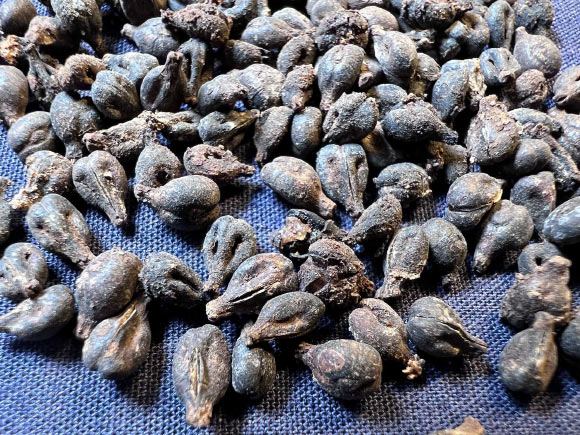5,000-Year-Old Wine Jars Unearthed at Abydos
Archaeologists in Egypt have uncovered hundreds of 5,000-year-old wine jars—some of which are still intact and contain traces of ancient wine—in the tomb of Meret-Neith, a princess, a queen, a royal mother, and a regent who was undoubtedly one of the most enigmatic and most charismatic characters of the First Dynasty of ancient Egypt.

Meret-Neith, ‘the One for whom Neith feels merout, love,’ ‘the One who is beloved by Neith’, was one of the most influential women at the royal court during the First Egyptian Dynasty around 3000 BCE.
Based on the archaeological and inscriptional sources, scholars have suggested that she may have been a daughter of Djer (third pharaoh of the First Dynasty), chief wife of Wadj (fourth pharaoh of the First Dynasty), and mother of Den.
But Meret-Neith was not only a woman of royal descent — thereby simply securing the continuity of the royal blood line — but rather, her influence went even further. She was the only woman to receive her own proper tomb in the royal ancestral cemetery at Abydos.
Since her tomb’s discovery by British Egyptologist Sir Flinders Petrie in 1899-1900, the historical significance of Meret-Neith has been a matter of debate.
Opinions range in scope from her having been a regent queen in charge of government until her young son and heir to the throne had come of age to being a fully-fledged ruler in her own right.
This debate remains unsettled, which is mainly due to the scarcity of the inscriptional evidence, as well as the many questions still surrounding her precise lineage and political significance at the time.
Although the royal necropolis at Umm el-Qaab, Abydos, has been under intensive investigation by the German Archaeological Institute since 1978, Meret-Neith’s tomb, her reign and her persona as one of the most important historical women during the formation of the early Pharaonic state have never received due attention.
“Queen Meret-Neith was probably the most powerful woman of her time,” said University of Vienna archaeologist Christiana Köhler and her colleagues from Austria and Germany.
“Today’s researchers speculate that she may have been the first female pharaoh in ancient Egypt and thus the predecessor of the later Queen Hatshepsut from the 18th dynasty. Her true identity remains a mystery.”
“We recently began archaeological excavations in the tomb of Meret-Neith at Abydos and discovered significant new information about this important historical woman.”

Among the huge amount of goods unearthed by the archaeologists were hundreds of large wine jars.
Many of the jars were in a good state of preservation and contained organic residue that they interpreted as the remains of ancient wine.
“Some of the jars were very well preserved and even still sealed in their original state,” the researchers said.
“In addition, inscriptions testify that Queen Meret-Neith was responsible for central government offices such as the treasury, which supports the idea of her special historical significance.”
“Meret-Neith’s monumental tomb complex in the Abydos desert, which includes the tombs of 41 courtiers and servants in addition to her own burial chamber, was built of unbaked mud bricks, clay and wood,” they said.
“Thanks to careful excavation methods and various new archaeological technologies, we were able to show that the tombs were built in several construction phases and over a relatively long period of time.”